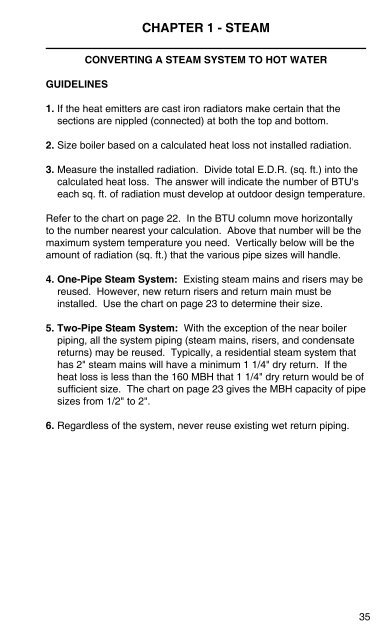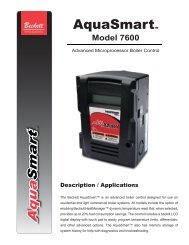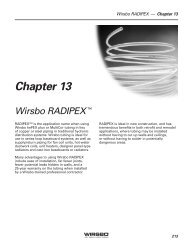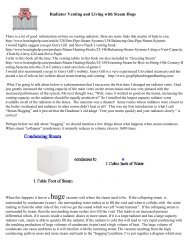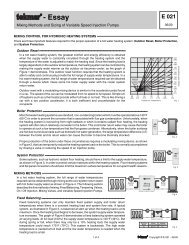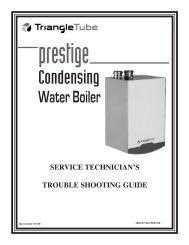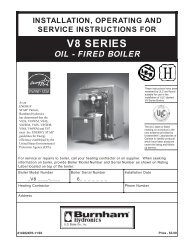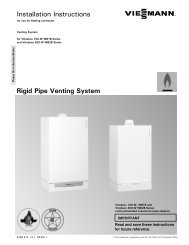Create successful ePaper yourself
Turn your PDF publications into a flip-book with our unique Google optimized e-Paper software.
CHAPTER 1 - STEAMGUIDELINESCONVERTING A STEAM SYSTEM TO HOT WATER1. If the heat emitters are cast iron radiators make certain that the .sections are nippled (connected) at both the top and bottom.2. Size boiler based on a calculated heat loss not installed radiation.3. Measure the installed radiation. Divide total E.D.R. (sq. ft.) into the.. .calculated heat loss. The answer will indicate the number of BTU's.. .each sq. ft. of radiation must develop at outdoor design temperature.Refer to the chart on page 22. In the BTU column move horizontallyto the number nearest your calculation. Above that number will be themaximum system temperature you need. Vertically below will be theamount of radiation (sq. ft.) that the various pipe sizes will handle.4. One-Pipe Steam System: Existing steam mains and risers may be .reused. However, new return risers and return main must be .installed. Use the chart on page 23 to determine their size.5. Two-Pipe Steam System: With the exception of the near boiler.. .piping, all the system piping (steam mains, risers, and condensate.. .returns) may be reused. Typically, a residential steam system that .has 2" steam mains will have a minimum 1 1/4" dry return. If the.. .heat loss is less than the 160 MBH that 1 1/4" dry return would be ofsufficient size. The chart on page 23 gives the MBH capacity of pipesizes from 1/2" to 2".6. Regardless of the system, never reuse existing wet return piping.35


